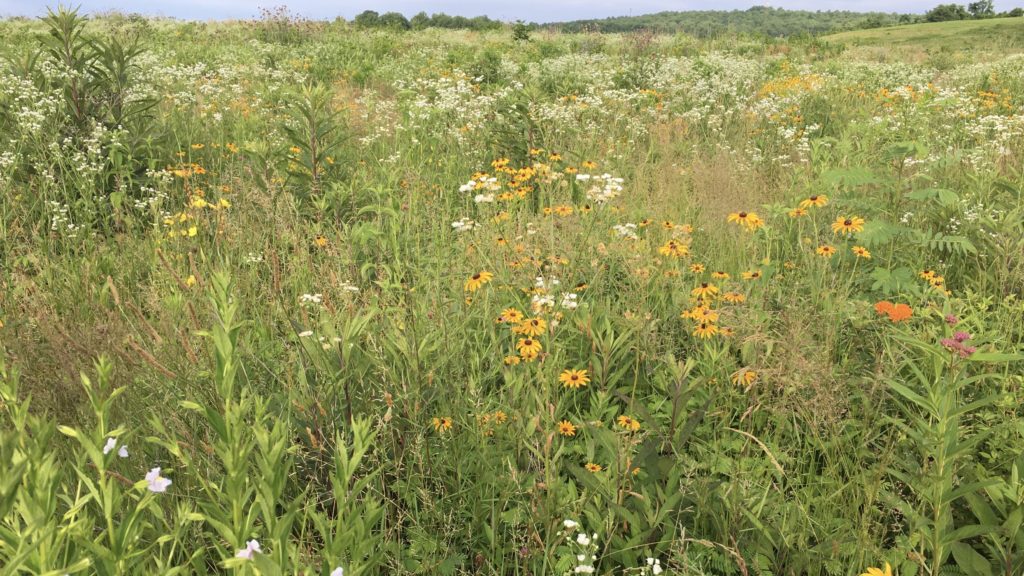The Making of a Meadow: An Experiment in Grassland Restoration

Project Objective
To compare the costs and results of land management techniques commonly used to restore and maintain native grasslands in northern Virginia.
Description
VWL is conducting a collaborative grassland restoration experiment to compare the results of active and passive grassland restoration techniques across three sites in the Virginia Piedmont. These sites are located at the Smithsonian Conservation Biology Institute, the Clifton Institute, and the Oak Spring Garden Foundation in northern Virginia.
At each site, we are testing eight combinations of four grassland establishment treatments and two grassland management techniques. The four establishment treatments test both active and passive restoration: active restoration is represented by plots that are seeded with native species after the clearing of non-native species by either herbicide or discing, while passive restoration is represented by control plots and plots that were left unseeded after herbicide application. The two management techniques—annual prescribed burns and annual mowing—test passive restoration treatments by mimicking the natural disturbance regimes of frequent fires and large herbivore grazing that historically maintained Southeastern grasslands.
The results of this experiment will provide information about the costs, challenges, and outcomes of frequently recommended grassland establishment and management techniques. These results will include changes in plant community composition over time, the influence of existing site conditions, and the impacts of the experimental treatments on invasive species. This information will be shared with community members interested in grassland restorations, restoration ecologists, and local conservation partners.
Sources of Funding

Collaborators

Project Contact
Jordan T. Coscia, Research Fellow, cosciaj[at]si.edu
In the News
Coming Soon
SUPPORT VWL
VWL is supported 100% by grants and donations and our work is made possible by the generous contributions from our community.
The Smithsonian Institution is a 501(c)(3). All contributions are tax-deductible.
GET IN TOUCH
Virginia Working Landscapes
Smithsonian’s National Zoo and Conservation Biology Institute
1500 Remount Road, MRC 5537
Front Royal, Virginia 22630
SCBIVWL@si.edu
540-635-0035
